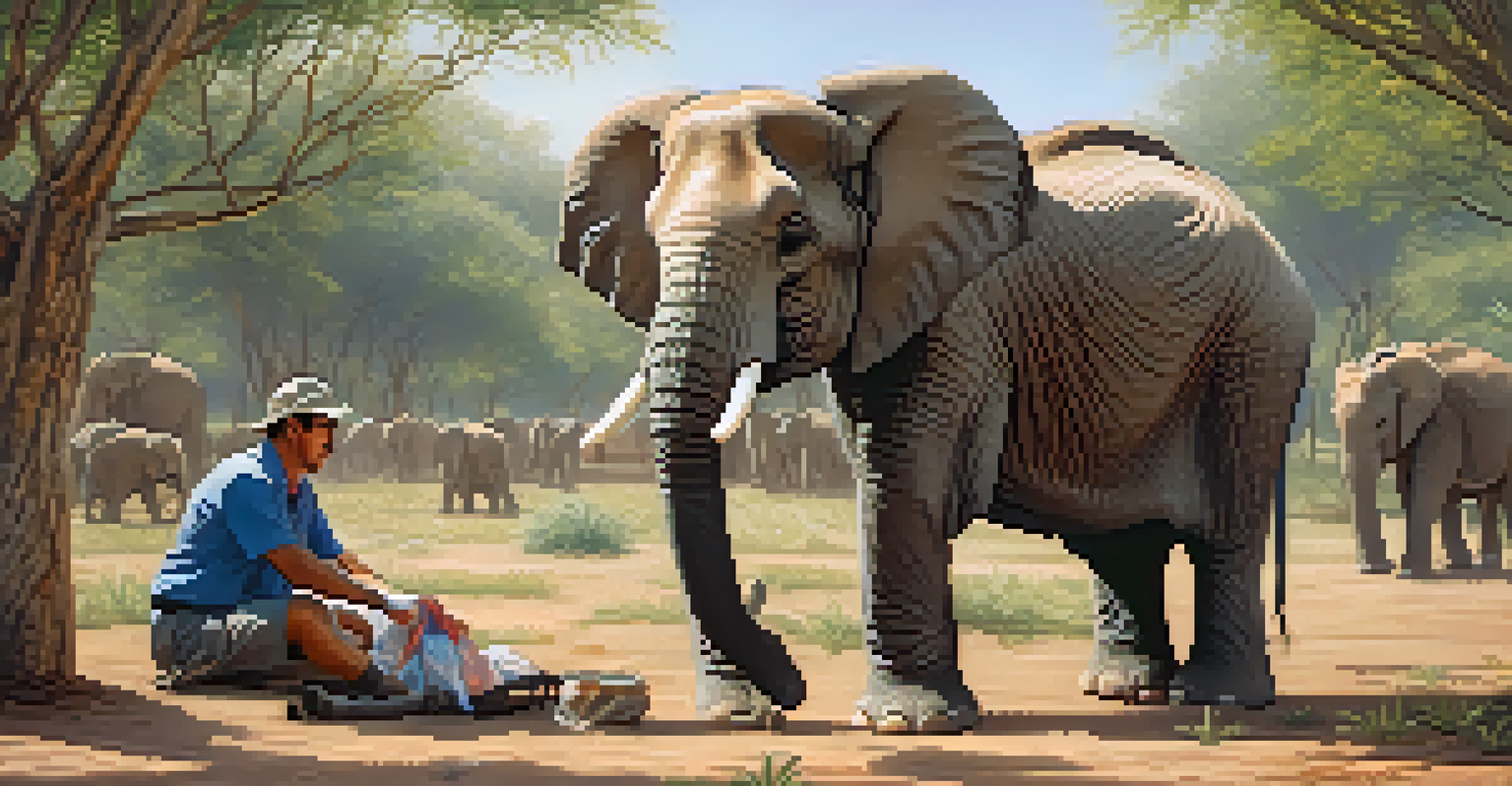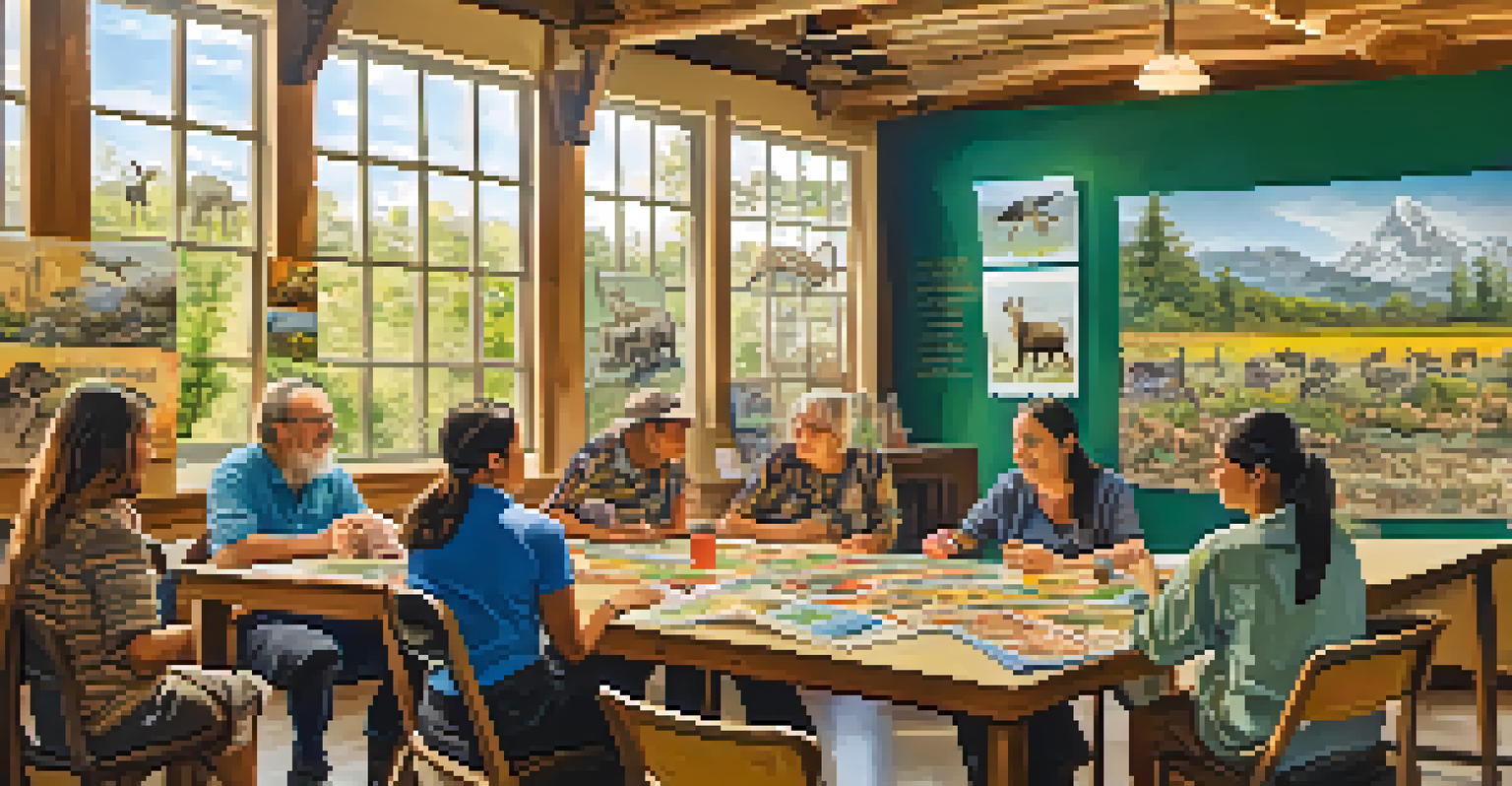Understanding Local Wildlife Rehabilitation Programs in India

Importance of Wildlife Rehabilitation in India
Wildlife rehabilitation plays a crucial role in conserving India's rich biodiversity. With a variety of ecosystems, India is home to many species that face threats from habitat loss, poaching, and human-wildlife conflict. Rehabilitation programs help injured or orphaned animals return to their natural habitats, ensuring their survival and the preservation of ecological balance.
The greatness of a nation and its moral progress can be judged by the way its animals are treated.
These programs not only focus on the physical recovery of animals but also aim to educate communities about coexisting with wildlife. By fostering a sense of responsibility towards wildlife, such initiatives encourage local populations to protect their natural surroundings. This holistic approach to wildlife care is essential for long-term conservation efforts.
In a country like India, where cultural beliefs often intertwine with nature, these rehabilitation efforts can also resonate on a deeper level. They remind us of the interdependence between humans and wildlife, emphasizing that protecting one often means safeguarding the other.
Common Wildlife Species in Rehabilitation
India's diverse wildlife includes a range of species that often require rehabilitation, such as birds, reptiles, and mammals. Commonly rescued animals include the Indian Peafowl, various species of owls, and even larger mammals like elephants and tigers. Each species presents unique challenges and requires specialized care and rehabilitation strategies.

For instance, injured birds may need specialized aviaries that mimic their natural environment to help them regain their flying abilities. Similarly, mammals like sloths and bears require a different approach, often needing extensive space and social interactions to thrive. Understanding the specific needs of each species is crucial for successful rehabilitation.
Wildlife Rehab Supports Biodiversity
Wildlife rehabilitation is essential for conserving India's biodiversity by helping injured or orphaned animals return to their natural habitats.
The dedication of wildlife rehabilitators ensures that these animals receive the best possible care. They often work tirelessly, day and night, to nurse these creatures back to health, showcasing the compassion and commitment that drives wildlife rehabilitation efforts in India.
Challenges Faced by Rehabilitation Programs
Despite their importance, wildlife rehabilitation programs in India face numerous challenges. Limited funding often hampers the ability to provide adequate care, leading to overcrowded facilities and insufficient resources. This scarcity can impact the quality of care that injured animals receive, making it a significant concern.
Until we stop harming all other living beings, we are still savages.
Additionally, the increasing rate of wildlife trafficking and habitat destruction further complicates rehabilitation efforts. Many animals arrive at rehabilitation centers with severe injuries or trauma, often requiring extensive medical treatment and rehabilitation time. This influx can overwhelm facilities, stretching their capacities and resources.
Moreover, public awareness and involvement play a critical role in the success of these programs. Many communities may not fully understand the significance of wildlife rehabilitation or how they can contribute. Raising awareness is essential to garnering support and involvement from local populations, ultimately benefiting the wildlife.
The Role of Volunteers in Rehabilitation Efforts
Volunteers are the backbone of many wildlife rehabilitation programs in India. They bring enthusiasm, diverse skills, and a willingness to learn, which can significantly enhance the capacity of rehabilitation centers. From assisting with animal care to helping with educational outreach, volunteers play a crucial role in supporting these initiatives.
Many rehabilitation centers offer training programs for volunteers, equipping them with the necessary knowledge to handle wildlife safely and effectively. This training not only benefits the animals but also helps to foster a deeper understanding of wildlife conservation among the volunteers. They often leave with a renewed commitment to environmental stewardship.
Community Engagement is Crucial
Involving local communities through education fosters responsibility and support for wildlife conservation efforts.
Moreover, the presence of volunteers can help alleviate some of the resource constraints faced by rehabilitation programs. Their support allows full-time staff to focus on more complex tasks, such as medical care and rehabilitation, ensuring that each animal receives the attention it needs.
Success Stories from Rehabilitation Programs
Success stories from wildlife rehabilitation programs can be incredibly inspiring. For example, organizations have successfully rehabilitated and released injured birds of prey, allowing them to soar back into the skies. These heartwarming stories highlight the positive impact of dedicated efforts in wildlife care and conservation.
Another notable example is the successful rehabilitation of orphaned elephant calves. Through extensive care and training, these calves are often reintegrated into the wild, demonstrating the effectiveness of rehabilitation programs. Such stories not only celebrate the achievements of these initiatives but also encourage more people to support wildlife rehabilitation.
These success stories serve as powerful reminders of the potential for recovery and resilience in wildlife. They illustrate that, with proper care and attention, injured or orphaned animals can reclaim their roles in the ecosystem, contributing to the balance of nature.
Community Involvement and Education
Community involvement is vital for the success of wildlife rehabilitation programs. Engaging local populations through educational workshops and outreach initiatives fosters a sense of ownership and responsibility towards wildlife conservation. When communities understand the importance of protecting their local wildlife, they are more likely to support rehabilitation efforts.
Education is also crucial in dispelling myths and misconceptions about wildlife. Many people fear certain animals due to a lack of understanding, leading to negative attitudes towards them. By providing accurate information and promoting positive interactions with wildlife, rehabilitation programs can help build a more harmonious relationship between humans and animals.
Volunteers Enhance Rehabilitation Efforts
Volunteers play a vital role in wildlife rehabilitation by providing essential support and increasing awareness about conservation.
Moreover, community members can become valuable allies in wildlife protection. By reporting injured animals or illegal activities, they can play a proactive role in conservation efforts. This collaborative approach strengthens the overall impact of wildlife rehabilitation programs, creating a network of support for wildlife.
Future of Wildlife Rehabilitation in India
The future of wildlife rehabilitation in India looks promising, thanks in part to increasing awareness and support for conservation efforts. As more people recognize the importance of preserving wildlife, funding for rehabilitation programs is gradually improving. This trend bodes well for the future of injured and orphaned animals in need of care.
Advancements in technology and veterinary medicine also play a pivotal role in enhancing rehabilitation practices. From improved medical treatments to innovative tracking methods for released animals, these developments contribute to more effective rehabilitation outcomes. The integration of modern techniques into traditional care practices can lead to better results for wildlife.

Ultimately, the continued success of wildlife rehabilitation programs in India will depend on a collective effort. Governments, NGOs, local communities, and individuals must work together to create a sustainable future for wildlife. As we strive to protect our natural heritage, we can ensure that future generations inherit a thriving ecosystem rich in biodiversity.